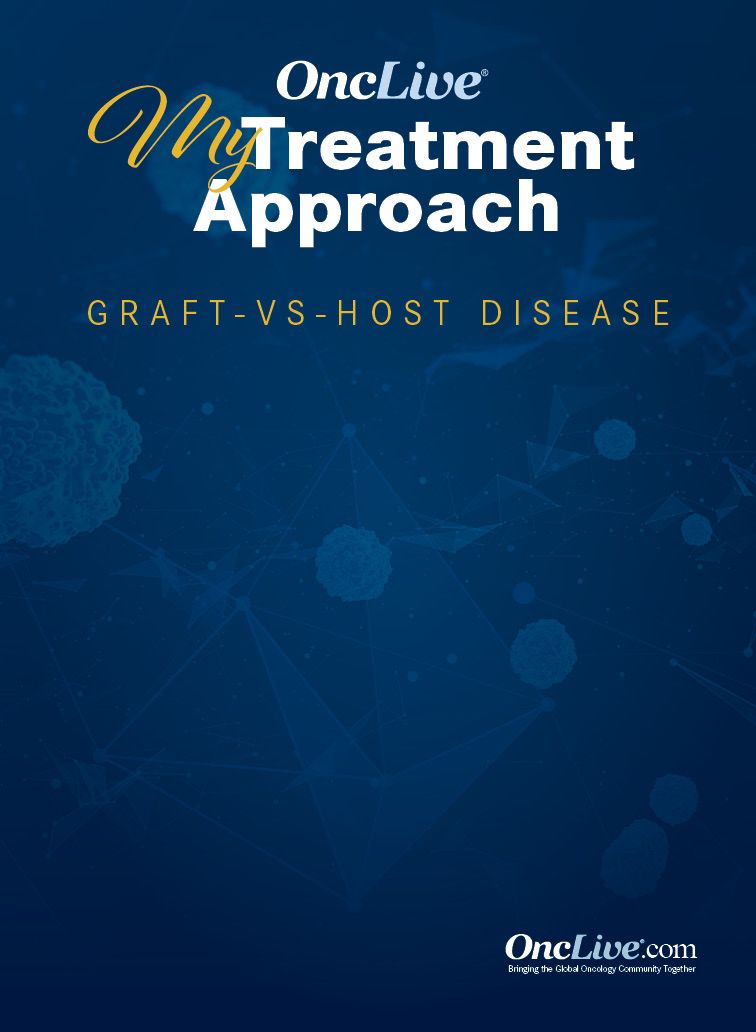Publication
Article
Supplements and Featured Publications
Long-Term Toxicity With Frontline Steroids Remains a Key Consideration of Chronic GVHD Management
Author(s):
Corey S. Cutler, MD, MPH, FRCPC, discusses the diagnostic and treatment landscape of chronic graft-vs-host disease.
Corey S. Cutler, MD, MPH, FRCPC

Although steroids remain the frontline standard of care in chronic graft-vs-host disease (cGVHD), research into ways to augment their use and potentially replace them with more effective agents has become a significant area of interest, explained Corey S. Cutler, MD, MPH, FRCPC. He added that doing so could spare patients unwanted adverse effects, including metabolic disturbances, osteoporosis, and neuro-psychological effects.
“In the cGVHD space, we’re excited about the ongoing randomized trial of axatilimab. There’s so much activity,” said Cutler. “We’re excited that our pharmaceutical colleagues are pushing the envelope here. We are looking forward to doing head-to-head trials in the acute and cGVHD space, as well as trials that will pit our novel agents against steroids rather than in addition to steroids in multiple lines of therapy. That is the future of our next generation of clinical trials.”
In an interview with OncLive®, Cutler, medical director, Adult Stem Cell Transplantation Program, director of Clinical Research, Stem Cell Transplantation, director, Stem Cell Transplantation Survivorship Program, institute physician, Dana-Farber Cancer Institute, and associate professor of medicine, Harvard Medical School, discussed the diagnostic and treatment landscape of cGVHD.
OncLive®: Can tissue biopsies be used to provide a definitive diagnosis of cGVHD?
Cutler: cGVHD is always diagnosed clinically. There currently are no required diagnostic tests, although we certainly use supporting laboratory-based values to help us make the diagnosis and sometimes use tissue biopsy. This includes biopsy of the skin, and sometimes the liver, the gastrointestinal tract, etc., but none of these are required. There are not pathognomonic findings on tissue biopsy that always make the diagnosis of cGVHD, so largely, this remains a clinical diagnosis.
Are there agents that are used to supplement steroids in the frontline setting?
Currently in the frontline setting, corticosteroids, unfortunately, remain the standard of care although we often use additional agents such as calcineurin inhibitors or mTOR inhibitors. We will use these other agents in an attempt to try to reduce the amount of steroids or the length of time that steroids are required, but they don’t actually increase the overall response rate. Some of the factors that we will consider when initially treating cGVHD is the likelihood of steroid toxicity in patients who are about to start corticosteroids and how they have tolerated other agents such as the calcium and inhibitors in the past.
What are some of the concerns of long-term steroid use?
Steroids are truly toxic agents even though they’re very effective, at least in the initial stages of treatment of cGVHD. They are very immunosuppressive and anti-inflammatory, and that’s where their benefit is derived from.
On the other hand, long-term use of corticosteroids leads to things like glucose intolerance, chronic hypertension, and other metabolic disturbances such as hyperlipidemia. There is osteoporosis or osteopenia and sometimes avascular necrosis of large joints, such as the hips. There are also the neuro-psychological effects of being on chronic corticosteroids, so things like depression are associated with it, sleeplessness, anxiety, etc.
Overall, they are not tolerated extraordinarily well in the long term, and that’s why we are trying to find agents that might be additive to steroids, or that could eventually replace steroids in the frontline setting for the management of cGVHD.
What is available to patients who progress on steroids?
We have been very fortunate in cGVHD because there’s been so much clinical interest in novel drug development in the space. We now have 3 drugs that are FDA approved in second-line therapy and beyond: ibrutinib [Imbruvica], belumosudil [Rezurock], and ruxolitinib [Jakafi] in the order they were approved. Selection of these agents in the second-line setting and beyond really relates to patient factors, such as what drugs they will tolerate and what other toxicities they might have, which might guide us in terms of which drug would be beneficial for the patient in the second- and third-line settings.
Then, of course, there are clinical trials. When available, we always try to push our patients towards participating in trials of novel agents. There are several that are being evaluated right now, some of which are very promising, but it’s a little too early to speak about the approval process for these agents.
Did the REACH2 trial (NCT02913261) provide any insight into which patient populations may derive the most benefit fromruxolitinib?
The REACH2 study [enrolled] patients with steroid-refractory moderate or severe cGVHD for the most part. I will note that in that trial patients had to be refractory to steroids, but it could have been as little as 1 weeks’ worth of steroids. About 35 to 40% of patients were enrolled on that basis. We don’t know a ton about organ-specific responses in that trial. Unfortunately, there didn’t appear to be a high response rate among patients with pulmonary involvement. We currently do not have a great way of predicting which patients will respond to which agent. That is the focus of several large research efforts in the field to try to match the appropriate drug to the appropriate patient, either based on a biologic mechanism or a cGVHD phenotype. We don’t have that quite yet. At this point, selection of drugs is based on experience with the agent and anticipated toxicities.










